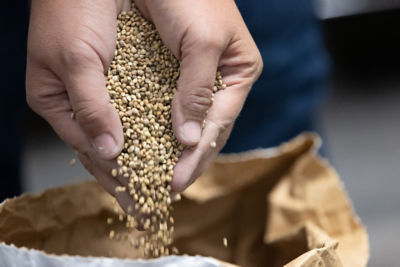Causal Agent
Xanthomonas campestris pv. armoraciae
Distribution
United States, Australia and Japan
Symptoms
Cabbage, cauliflower, broccoli, radishes and turnips are susceptible to this disease. Symptoms first appear as depressed, translucent flecks on leaves. These flecks develop into circular or angular lesions up to 5 mm (1/10 in.) across that are yellowish-white to brown or black in color and are surrounded by translucent haloes. Centers of lesions often break down, giving the leaf a shot-hole appearance. Symptoms are generally restricted to the tissue between the veins, although, dark streaks are often present along the veins. Lesions on leaf margins often result in tipburn-like symptoms, which later give a tattered appearance to the leaf.


Conditions for Development
The organism can be soil- or seed-borne. Infected plant debris is also a source of inoculum. The organism invades via stomata and requires long periods of free moisture on the leaf surface to infect. Prolonged periods of dew formation, or rain, favor disease development. The disease often appears during the cooler temperatures of fall or winter, although, the organism will infect and cause symptoms over a wide range of temperatures.
Control
Use seed-free of Xanthomonas campestris pv. armoraciae. Plant crops in well-drained soils and use irrigation practices that minimize leaf wetness. Rotate to a non-host crop for at least three years following a cruciferous crop.




